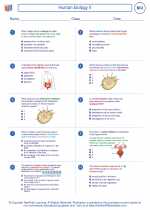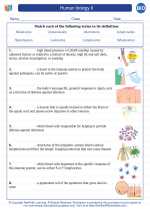Marine Life
Marine life refers to the diverse organisms that inhabit the oceans and other saltwater environments. This includes a wide range of species from microscopic phytoplankton to large marine mammals.
Ecological Importance
Marine life plays a crucial role in the global ecosystem. It contributes to the production of oxygen, carbon cycling, and provides a source of food and livelihood for millions of people around the world.
Key Marine Ecosystems
- Coral Reefs: These diverse ecosystems are home to a myriad of marine species and are often referred to as the "rainforests of the sea."
- Estuaries: These transitional zones between rivers and the sea support unique and diverse marine life.
- Open Ocean: The vast expanses of the open ocean are home to a wide variety of species, from tiny zooplankton to large predators like sharks and whales.
- Mangroves: These coastal habitats provide important nursery grounds for many marine species and offer protection from coastal erosion.
Adaptations of Marine Organisms
Marine organisms have evolved a wide range of adaptations to survive in their habitats. These include specialized respiratory systems, osmoregulation mechanisms, and unique reproductive strategies.
Threats to Marine Life
Marine life faces numerous threats, including overfishing, habitat destruction, pollution, and climate change. These factors can lead to declines in marine biodiversity and disrupt marine ecosystems.
Conservation Efforts
Several conservation initiatives aim to protect marine life, such as the establishment of marine protected areas, sustainable fishing practices, and efforts to reduce marine pollution.
Study Tips
- Focus on understanding the key characteristics of different marine ecosystems.
- Learn about the unique adaptations of marine organisms and how they help them survive in their environments.
- Understand the major threats to marine life and the conservation efforts aimed at protecting it.
- Explore case studies of specific marine species or ecosystems to deepen your understanding.
- Stay updated on current issues and research in marine biology to gain a broader perspective.
◂Biology Worksheets and Study Guides High School. Human biology II

 Worksheet/Answer key
Worksheet/Answer key
 Worksheet/Answer key
Worksheet/Answer key
 Vocabulary/Answer key
Vocabulary/Answer key
 Vocabulary/Answer key
Vocabulary/Answer key
 Vocabulary/Answer key
Vocabulary/Answer key
 Vocabulary/Answer key
Vocabulary/Answer key
 Vocabulary/Answer key
Vocabulary/Answer key
 Vocabulary/Answer key
Vocabulary/Answer key
 Vocabulary/Answer key
Vocabulary/Answer key
